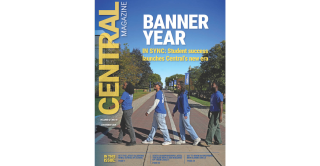
41st Annual CCSU Sports Medicine Symposium
Tuesday March 3, 2026
Presentations & Learning Objectives
Clinical Imaging for Lower Extremity Athletic Injuries: MRI Case Reviews Speaker: Robert Waskowitz, MD
Presentation Description
MRI case studies are a valuable educational tool for athletic trainers because they bridge the gap between clinical evaluation and definitive diagnosis. By reviewing MRI findings alongside injury mechanisms and physical exam results, athletic trainers can better understand injury severity, identify associated pathologies, and anticipate recovery timelines. Case studies involving common athletic injuries—such as ligament tears, stress fractures, and tendon pathology—help athletic trainers interpret imaging reports, communicate effectively with physicians, and apply evidence-based principles to rehabilitation and return-to-play decisions. Using MRI case studies enhances clinical reasoning and supports safer, more individualized care for athletes.
Learning Objectives
At the end of this session/activity, the participant/attendee will be able to:
- Interpret common MRI findings associated with lower-extremity athletic injuries and relate them to injury mechanisms and clinical signs.
- Apply MRI case study information to inform rehabilitation planning, activity modification, and return-to-play decision-making.
- Communicate MRI findings effectively with healthcare providers, coaches, and athletes to support interdisciplinary patient care.
Level of Difficulty: Intermediate/Advanced
Practice Domains: Assessment, Evaluation, and Diagnosis
Clinical Application of Mulligan’s MWM for the Ankle Joint
Speakers: Julie Paolino, PT, MS, ATC, MCTA, CIDN, FGS, 3DMAPS Robert Huyler, DPT, CSCS, CWcHP, CMP
Presentation Description
Mulligan’s Mobilization with Movement (MWM) is a manual therapy technique commonly used by athletic trainers to address ankle dysfunction, particularly following lateral ankle sprains. This approach combines a sustained accessory joint mobilization with active, pain-free movement to restore normal arthrokinematics and improve functional range of motion. In the ankle, MWM techniques—such as posterior talar glides during dorsiflexion—are used to reduce pain, improve mobility, and enhance weight-bearing mechanics. When applied appropriately, Mulligan’s MWM can facilitate earlier return to functional activities while reinforcing proper movement patterns in athletic populations.
Learning Objectives
At the end of this session/activity, the participant/attendee will be able to:
- Describe the principles and indications of Mulligan’s Mobilization with Movement as applied to the ankle joint.
- Demonstrate proper hand placement, patient positioning, and movement patterns for ankle MWM techniques.
- Integrate ankle MWM into a comprehensive rehabilitation program to improve dorsiflexion, function, and return-to-play outcomes.
Level of Difficulty: Intermediate/Advanced
Practice Domains: Therapeutic Intervention
Clinical Application of Mulligan’s Ankle Taping Techniques
Speakers: Julie Paolino, PT, MS, ATC, MCTA, CIDN, FGS, 3DMAPS Robert Huyler, DPT, CSCS, CWcHP, CMP
Presentation Description
Mulligan’s Mobilization with Movement (MWM) is a manual therapy technique commonly used by athletic trainers to address ankle dysfunction, particularly following lateral ankle sprains. This approach combines a sustained accessory joint mobilization with active, pain-free movement to restore normal arthrokinematics and improve functional range of motion. In the ankle, MWM techniques—such as posterior talar glides during dorsiflexion—are used to reduce pain, improve mobility, and enhance weight-bearing mechanics. When applied appropriately, Mulligan’s MWM can facilitate earlier return to functional activities while reinforcing proper movement patterns in athletic populations.
Learning Objectives At the end of this session/activity, the participant/attendee will be able to:
- Describe the principles and indications of Mulligan’s Mobilization with Movement as applied to the ankle joint.
- Demonstrate proper hand placement, patient positioning, and movement patterns for ankle MWM techniques.
- Integrate ankle MWM into a comprehensive rehabilitation program to improve dorsiflexion, function, and return-to-play outcomes
Level of Difficulty: Intermediate/Advanced
Practice Domain: Therapeutic Intervention
General Medicine: Common Psychological Medications Prescribed for Athletes
Speaker: Jeffrey Brown, MD
Presentation Description
Athletes may be prescribed psychological medications to help manage mental health conditions such as anxiety, depression, attention-deficit/hyperactivity disorder (ADHD), and sleep disturbances, all of which can affect both performance and overall well-being. Commonly prescribed medications include selective serotonin reuptake inhibitors (SSRIs) for depression and anxiety, stimulant and non-stimulant medications for ADHD, anxiolytics for short-term anxiety management, and sleep aids for insomnia. When prescribing these medications to athletes, healthcare providers must carefully consider potential side effects—such as fatigue, changes in reaction time, or weight fluctuations—as well as anti-doping regulations and therapeutic use exemptions (TUEs). Proper monitoring, education, and collaboration between athletes, medical professionals, and coaches are essential to ensure mental health treatment supports both safe participation and optimal performance.
Learning Objectives
At the end of this session/activity, the participant/attendee will be able to:
- Identify common psychological medications prescribed to athletes and the mental health conditions they are used to treat.
- Explain potential side effects of psychological medications that may impact athletic performance and safety.
- Understand the importance of anti-doping regulations and therapeutic use exemptions when prescribing or using psychological medications in sport.
Level of Difficulty: Advanced
Practice Domains: Risk Reduction, Wellness & Health Literacy; Therapeutic Intervention
General Medicine: Screening Methods for Common Mental Health Disorders in Athletes
Speaker: Chantelle Bowden, MD, MBA, FRCPC
Presentation Description
Recognizing mental health concerns in athletes requires an understanding of how psychological distress presents in high-performance environments. Common concerns such as anxiety, depression, burnout, eating disorders, and substance misuse may be masked by sport culture, training demands, or performance-driven behaviors. Warning signs can include changes in mood, motivation, sleep patterns, performance consistency, or social withdrawal. Screening methods often involve validated tools such as the PHQ-9 for depression, GAD-7 for anxiety, and athlete-specific mental health questionnaires, along with regular check-ins and observational assessments by coaches, athletic trainers, and healthcare professionals. Early recognition and routine screening promote timely referral, reduce stigma, and support both mental well-being and athletic performance.
Learning Objectives At the end of this session/activity, the participant/attendee will be able to:
- Recognize common signs and symptoms of mental health issues as they present in athletic populations.
- Describe commonly used screening tools and methods for assessing mental health in athletes.
- Explain the importance of early identification and referral in supporting athlete mental health and performance.
Level of Difficulty: Intermediate
Practice Domains: Risk Reduction, Wellness & Health Literacy
General Medicine: Nutritional Impact on Physical and Mental Sports Performance
Speaker: Kaneen Gomez-Hixson, MS, RDN, CSSD, CD-N
Presentation Description
Nutrition plays a critical role in optimizing both physical and mental performance in sport by supporting energy availability, recovery, cognitive function, and emotional regulation. Adequate intake of macronutrients fuels training and competition, while micronutrients such as iron, vitamin D, and B vitamins contribute to oxygen delivery, bone health, and nervous system function. Hydration status directly affects endurance, reaction time, and concentration, while insufficient fueling can lead to fatigue, impaired decision-making, mood disturbances, and increased injury risk. For athletes, consistent, well-balanced nutrition supports not only physical output but also mental resilience, focus, and stress management, making it a foundational component of overall performance and well-being.
Learning Objectives
At the end of this session/activity, the participant/attendee will be able to:
- Explain how proper nutrition influences physical performance, recovery, and injury prevention in athletes.
- Describe the relationship between nutrition, cognitive function, and mental health in sport.
- Identify key nutritional strategies that support optimal physical and mental sports performance.
Level of Difficulty: Intermediate
Practice Domains: Risk Management & Injury Prevention; Professional Responsibilities



